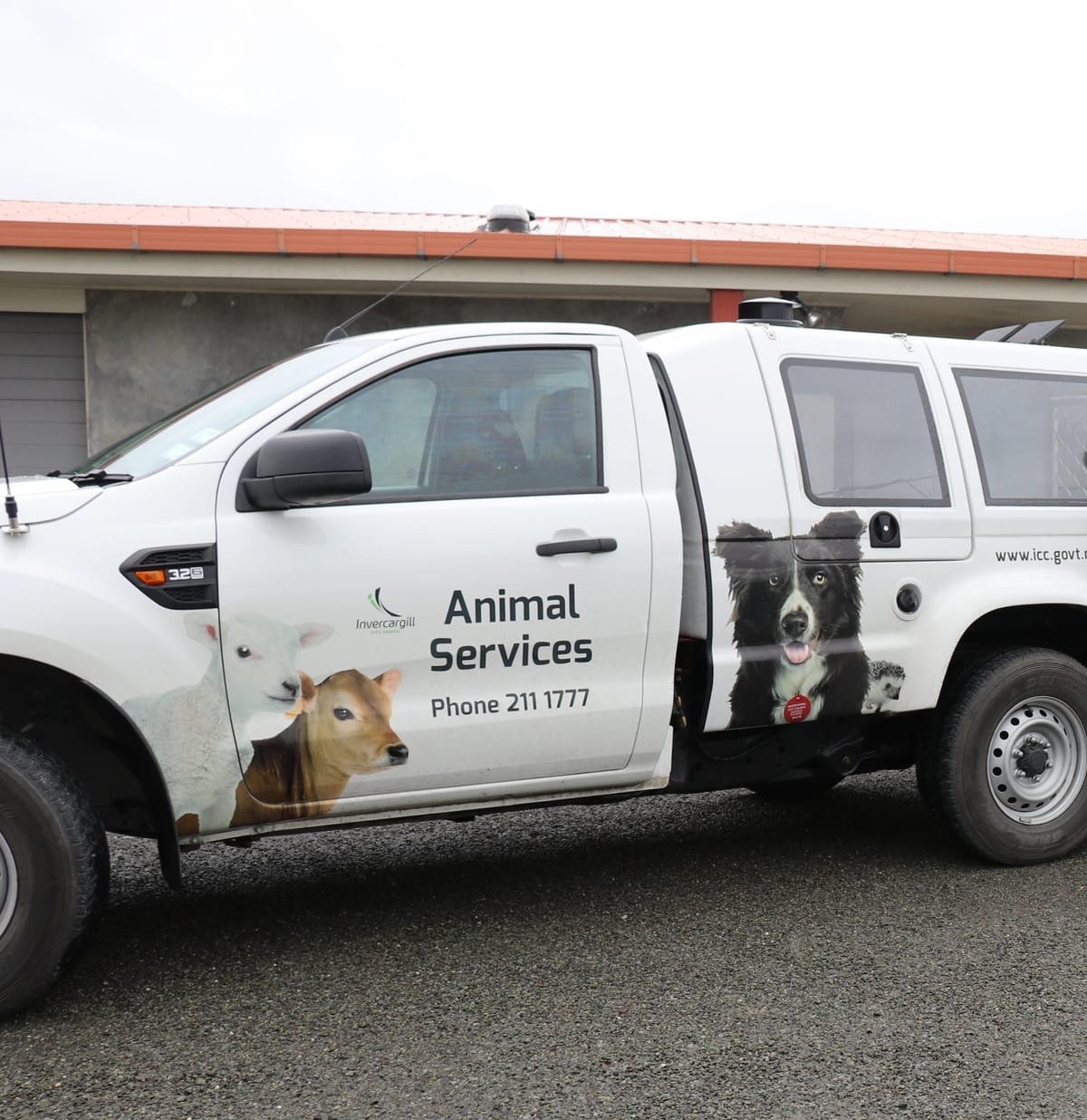Captive bolt guns were first used by Invercargill City Council in April 2016 following the approval of the method by elected Council members.
At that time, advice from the local SPCA branch was that the organisation considered it a humane means of euthanasia. It is frequently used in freezing works and commercial slaughter houses.
Since the method’s implementation, 122 dogs in total have been euthanised, however not all of those dogs will have been euthanised by captive bolt. The figure includes dogs which had owners who elected to have their dog euthanised by lethal injection, at their cost. Dog owners can choose to have their dog euthanised by captive bolt at no cost.
The number of dogs euthanised since 1 January 2017 is 42. In 2016, 102 dogs were euthanised, and in 2015, 207 dogs were euthanised.
The reasons a dog may be euthanised include:
- Owner cannot be found OR the Court has ordered destruction and the owner takes no steps to contact Council following a Court destruction order.
- Dog has been unclaimed for seven days (minimum) AND is unsuitable for rehoming. Factors which contribute to establishing whether a dog is suitable to be rehomed include: history of complaints relating to the dog, the dog’s behaviour when it was seized, the dog’s behaviour in the pound, the reasons for impoundment, breed as per Dog Control Act 1996 and regulations, and if the dog has previously been classified as menacing or dangerous.
- The dog is unwell, and euthanasia has been recommended by a veterinarian or SPCA inspector following their inspection of the dog to prevent further suffering.
It is important to note Council does all it can to identify and locate a dog’s owner. Dogs are legally required to be microchipped and registered, which should make finding a dog’s owner a straightforward process if that owner is meeting their obligations in regards to these requirements. Should Council be unable to locate that owner, the statutory requirement is that the dog is to be held for seven days, after which time it becomes the property of the council. However, Council often allows a further grace period to allow more time for the dog’s owner to come forward before any further decisions are made.
Council always endeavours to rehome dogs which are suitable for rehoming. At present this is done through the local SPCA, Furever Homes, and through the pound’s Facebook Page.
Staff who undertake Captive Bolt euthanasia have been trained by the captive bolt gun’s manufacturer’s representative, and hold firearms licences.
During the procedure, two staff members are always present, and two captive bolt firearms are used to ensure euthanasia is fast and painless. The dog is killed instantly with the first captive bolt shot.
The pound facility is placed on lock-down prior to, and during any procedure, to ensure safety and that no-one can enter or leave the pound.
If the dog to be euthanised has shown signs of aggression, a catchpole is used to ensure safety of staff. The dog is led to a custom-built aluminium frame, which does not press on the dog’s body or neck, but simply prevents the dog from moving forwards or backwards. The frame is adjustable to suit the size of the dog to be euthanised.
In the video which was seen last week, the dog slumped against the loop of the catchpole, meaning the catchpole was caught between the dog’s neck and the aluminium frame. The animal control officer was then unable to disengage and remove the catchpole from around the dog’s neck because it was caught. The officer uses a foot to attempt to move the dog’s head enough to release the catchpole’s loop. The footage was filmed in the very early stages of Council’s use of captive bolt guns. Procedures have changed and further training has been undertaken.
A Ministry for Primary Industries Animal Welfare Inspector has met with staff to understand Council process and procedures for euthanising dogs. An inspection of the pound occurred on Tuesday, 19 September.
Background on decision to move to captive bolt:
Animal Services entered into a contract with a vet service in May 2015 to undertake euthanasia of dogs by lethal injection. This contract was put out for tender. The tender sought for a vet to carry out the procedure at the pound. None of the vets were happy with this aspect as the cost for them to come to the Council’s facility did not make it economical for them to do so. Consequently dogs were transported to the clinic and the procedure was carried out behind the clinic.
However, there were stringent requirements the veterinarian had, including that they would not euthanise dangerous or diseased dogs. As Council has already stated, many of the dogs which are euthanised are dangerous.
This meant that any dog which the veterinarian would not euthanise needed to be euthanised by Council staff using a firearm.
The decision to use captive bolt guns was made by elected members after it was deemed safer for staff, less stressful for the dogs, and more cost effective than the previous arrangement. Further, the local SPCA had agreed that captive bolt gun use was a humane means of euthanasia.
Invercargill City Council Dog Statistics
Total dogs (estimate): 9232
Registered dogs: 8308
Unregistered dogs (estimate): 924
Classified Dangerous dogs: 2
Classified Menacing dogs: 158
Invercargill City Council Impoundment Totals
| 2014 | 2015 | 2016 | 2017 | |
| Released | 398 | 762 | 643 | 374 |
| Rehomed | 70 | 81 | 46 | 50 |
| Euthanasia | 155 | 207 | 102 | 42 |
| Infringed | 10 | 50 | ||
| Released+Infringed | 4 | |||
| Total | 623 | 1060 | 841 | 470 |

